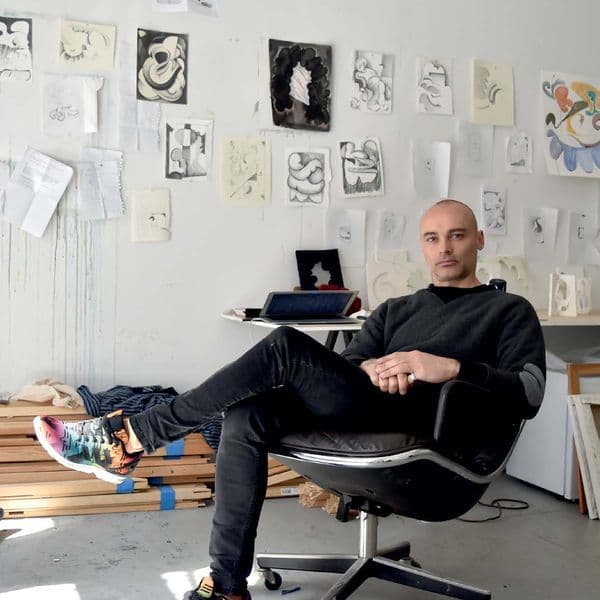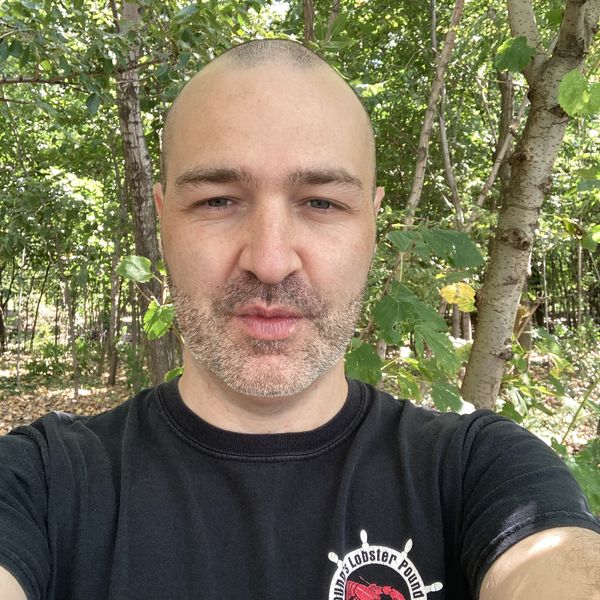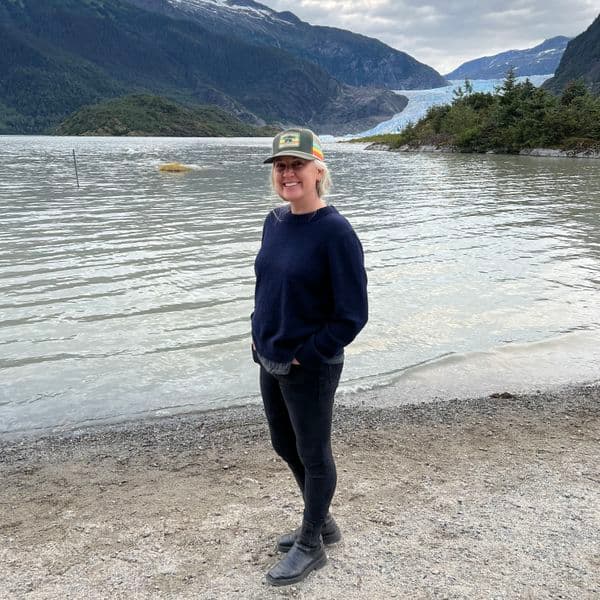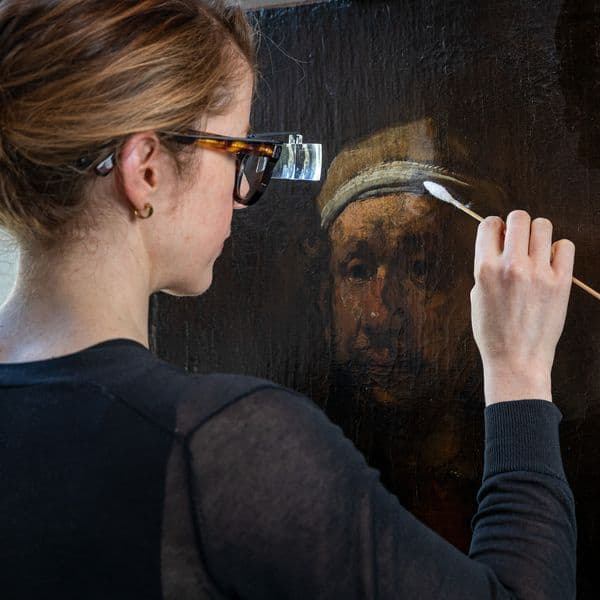Nicholas Smith
2019 AUSART Fellow/Scholar
///national-gallery-of-australia/media/dd/images/Nicholas_Smith_photo_by_Vivian_Nilan_tsKjo2j.jpg)
Nicholas Smith © the artist, Photographer: Vivian Nilan
Nicholas Smith is a Melbourne-based visual artist who has held several solo exhibitions in Melbourne and Sydney. Smith’s work can be found in the collection of the National Gallery of Victoria (NGV) in Melbourne, and he has been curated into the 2023 iteration of The National 4: New Australian Art at the Museum of Contemporary Art (MCA) in Sydney. He completed a Master of Fine Arts (MFA) in Art at ArtCenter College of Design in Pasadena, California.
What sort of art do you make?
I work within the field of sculpture, utilising ceramics, textiles and found materials. My work takes materials and objects related to domestic spaces, particularly those of regional suburban Australia, and reconsiders how they can speak to a queer experience. My work uses seduction as a tool to subvert preconceived notions of masculinity, instead engaging the audience in a language of desire and sensuality.
If you had to nominate one work to date that encapsulates your approach, which one would it be?
St Sebastian martyred five times, 2018, which is in the collection of the National Gallery of Victoria. This work, which I made using stoneware and porcelain, engages specifically with my religious upbringing in the form of St Sebastian, one of the Catholic Church’s martyr saints.
What mediums, techniques, tools and materials do you use?
My studio process always starts with clay and then spills out into other sculptural mediums. I hand-build ceramics using a coil pot technique. I rarely glaze my ceramics, instead burnishing the raw clay and then polishing with beeswax. My ceramics are then worked into larger sculptural assemblages. I repeatedly use found materials that speak to a regional suburban experience. For example, vinyl upholstery, foam taken from discarded mattresses, leather from discarded sofas, and cardboard. Some of these materials find their way into large hangings that are used to frame my ceramic works.
How was your experience of studying for an MFA in Art in Pasadena, California?
The degree was an intensive two-year course that fully immersed me in the Los Angeles art world. ArtCenter has an unparalleled program of visiting artists, curators, writers and gallerists, all of whom participate in studio visits. Through this program I was able to meet and build connections with some of LA's and America's leading cultural thinkers and producers. The course was incredibly challenging and rewarding. It gave me a much more worldly understanding of how the international art world functions.
What was the most inspiring part?
The ArtCenter faculty. I had an amazingly supportive and committed committee that guided me through the final year of my MFA.
How did the AusArt Fellowship support your study and research endeavours?
I would not have been able to study in the US without this Fellowship. I completely self-funded my education in the US and therefore could never have afforded that experience without the AFNGA's assistance. With their generous help I was able to pay all my school fees upfront. This financial assistance gave me the luxury of being able to focus all my time and energy on my education and career.
'I would not have been able to study in the US without this Fellowship. I completely self-funded my education in the US and therefore could never have afforded that experience without the AFNGA's assistance. With their generous help I was able to pay all my school fees upfront. This financial assistance gave me the luxury of being able to focus all my time and energy on my education and career.'
What did you experience or have access to while studying in the US that you couldn’t have experienced or accessed in Australia?
Because LA is an international city, people at the forefront of cultural production move through all the time. While living in LA, I regularly attended exhibitions, openings, readings, dances, performances, lectures and concerts given by people that I would never have had access to in Australia.
How did studying in the US help expand your professional network?
I now have a close and supportive community of friends and peers in LA and extended network contacts as well. This makes returning to LA so much easier.

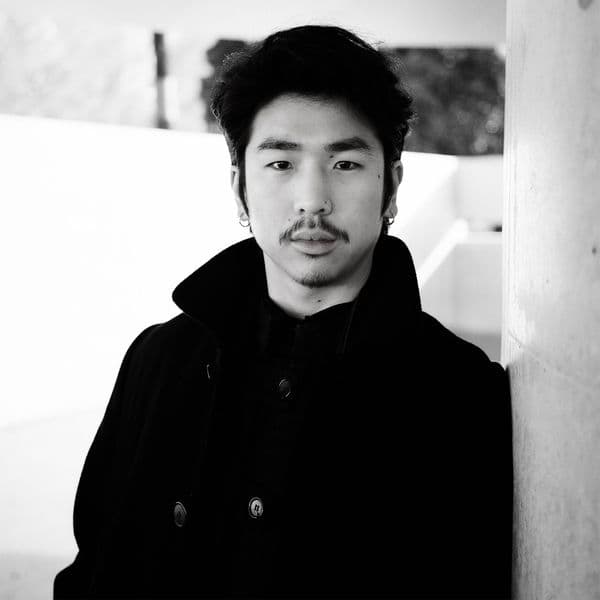
///national-gallery-of-australia/media/dd/images/Ihab_S_Balla.jpg)
///national-gallery-of-australia/media/dd/images/Pip_Mott_by_Jesse_Hunniford.jpg)
///national-gallery-of-australia/media/dd/images/Guy_Grabowsky_Portrait_by_Hugh_Davies.jpg)
///national-gallery-of-australia/media/dd/images/Kai_Waskikowski_by_Joe_Brennan.jpg)
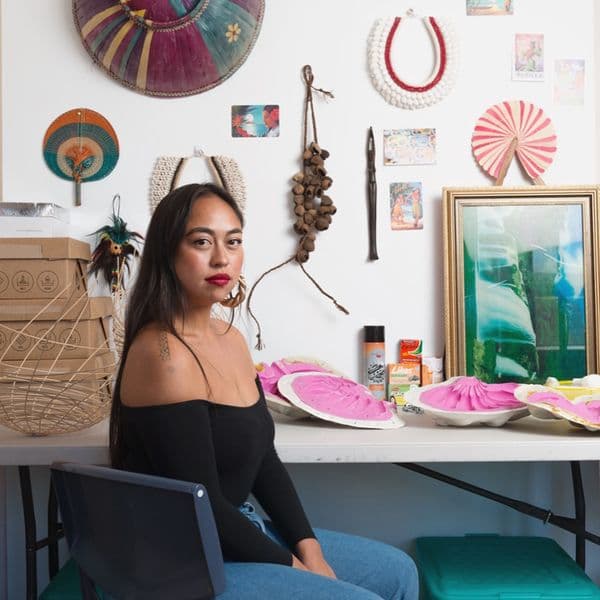
///national-gallery-of-australia/media/dd/images/Nicholas_Crogan.JPG)
